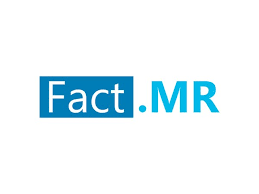Sleeping Aid Market Grows with Natural and Tech Trends

Sleep is a cornerstone of health, yet millions worldwide struggle with sleep disorders like insomnia, sleep apnea, and narcolepsy. The growing prevalence of these conditions, coupled with increasing awareness of sleep’s role in mental and physical well-being, has fueled the expansion of the sleeping aid market. Valued at US$ 29.88 billion in 2024, this market is projected to reach US$ 48.04 billion by 2034, growing at a compound annual growth rate (CAGR) of 4.9%. Let’s explore the dynamics driving this market, its challenges, and what lies ahead.
Understanding the Sleeping Aid Market
The sleeping aid market encompasses drugs and devices designed to treat sleep-related disorders. Pharmaceutical products include prescription medications like benzodiazepines and non-benzodiazepine hypnotics, as well as over-the-counter (OTC) options like melatonin and antihistamines. Devices, such as continuous positive airway pressure (CPAP) machines for sleep apnea, wearable sleep trackers, and smart mattresses, are gaining traction as non-invasive alternatives.
The market serves a diverse consumer base, from individuals with chronic sleep disorders to those seeking temporary relief from stress-induced sleeplessness. Key drivers include rising stress levels, aging populations, and the increasing incidence of lifestyle-related health issues like obesity, which is linked to sleep apnea.
Key Trends Shaping the Market
- Growing Demand for Non-Pharmacological Solutions
Consumers are increasingly skeptical of long-term medication use due to side effects like dependency and drowsiness. This has spurred demand for natural and herbal supplements, such as, melatonin and valerian root, and technological solutions. Wearable devices that monitor sleep patterns and apps that offer guided meditation or white noise are becoming popular, especially among younger demographics. - Technological Advancements in Sleep Devices
Innovations in sleep technology are transforming the market. CPAP machines are now quieter and more comfortable, improving patient compliance. Smart beds that adjust firmness based on sleep position and wearable devices that provide real-time sleep analytics are appealing to tech-savvy consumers. These advancements align with the broader trend of personalized healthcare. - Increased Awareness of Sleep Health
Public health campaigns and media coverage have highlighted the link between poor sleep and conditions like depression, heart disease, and reduced productivity. As a result, more people are seeking professional help for sleep issues, boosting demand for both medical and consumer-grade sleep aids. - E-commerce and Direct-to-Consumer Models
The rise of online pharmacies and direct-to-consumer brands has made sleep aids more accessible. Companies are leveraging digital marketing to reach consumers directly, offering subscription models for supplements and devices. This trend has democratized access but also raised concerns about unregulated products.
Challenges Facing the Market
Despite its growth, the sleeping aid market faces several hurdles:
- Regulatory Scrutiny: Prescription sleep medications are heavily regulated due to risks of addiction and adverse effects. Regulatory bodies like the FDA are also cracking down on misleading claims by supplement manufacturers, which could impact market credibility.
- Side Effects and Safety Concerns: Both drugs and devices can have drawbacks. For instance, CPAP machines require adaptation, and some users find them uncomfortable. Medications, even OTC ones, can cause side effects like grogginess or interactions with other drugs.
- High Costs: Advanced sleep devices, such as CPAP machines or smart beds, can be expensive, limiting access for lower-income consumers. Insurance coverage for these devices varies, creating disparities in access.
- Stigma Around Sleep Disorders: In some cultures, seeking help for sleep issues is stigmatized, which can deter people from purchasing sleep aids or consulting healthcare providers.
Regional Insights
North America dominates the sleeping aid market, driven by high healthcare spending, widespread awareness, and a large population with sleep disorders. The U.S. alone accounts for a significant share, with insomnia affecting roughly 30% of adults. Europe follows closely, with growing adoption of sleep technology in countries like Germany and the UK.
Asia-Pacific is the fastest-growing region, fueled by rising disposable incomes, urbanization, and increasing stress levels in countries like China and India. However, cultural attitudes toward sleep and limited access to healthcare in rural areas pose challenges.
Future Outlook
The sleeping aid market is poised for steady growth over the next decade. Key opportunities include:
- Personalized Sleep Solutions: Advances in AI and machine learning could lead to highly customized sleep aids, such as devices that adapt to individual sleep patterns or medications tailored to genetic profiles.
- Integration with Wellness Trends: Sleep aids are increasingly marketed as part of holistic wellness, alongside products like fitness trackers and mindfulness apps. This trend could attract health-conscious consumers.
- Sustainability in Manufacturing: As consumers prioritize eco-friendly products, manufacturers may focus on sustainable packaging and production processes for sleep aids.
However, addressing safety concerns and improving affordability will be critical to sustaining growth. Collaboration between healthcare providers, manufacturers, and regulators can ensure that sleep aids are both effective and accessible.
Conclusion
The sleeping aid market reflects society’s growing recognition of sleep as a vital component of health. With a projected value of US$ 48.04 billion by 2034, the market offers significant opportunities for innovation and investment. As technology advances and consumer preferences evolve, the industry must balance efficacy, safety, and accessibility to meet the needs of a diverse global population. Whether through a high-tech wearable or a simple herbal supplement, the quest for better sleep is driving a dynamic and evolving market.
- Information Technology
- Office Equipment and Supplies
- Cars and Trucks
- Persons
- Books and Authors
- Tutorials
- Art
- Causes
- Crafts
- Dance
- Drinks
- Film
- Fitness
- Food
- Jeux
- Gardening
- Health
- Domicile
- Literature
- Music
- Networking
- Autre
- Party
- Religion
- Shopping
- Sports
- Theater
- Wellness


